Knitting has recently resurfaced in popularity as a relaxing and rewarding hobby. For beginners, choosing the right essential knitting tools is the most important component of your knitting journey. This guide will walk you through the best materials for beginner knitters, helping you make informed decisions.
This blog post includes affiliate links to recommended products we love. Thanks for checking them out!
Choosing the Right Knitting Yarn
Yarn Weight
Yarn weight refers to the yarn’s thickness and plays a significant role in the outcome of your knitting project. Yarn comes in various weights, including lace, fingering, sport, worsted, and bulky (in that order). For beginners, worsted-weight yarn is highly recommended. It is easy to handle, not too thin or too thick, and provides good stitch definition, making it perfect for learning and practicing new techniques.
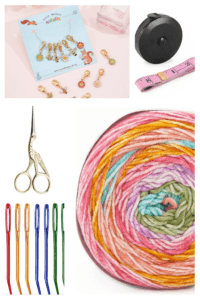
Knitting Tools For Beginners
Yarn Fiber
The fiber content of yarn affects its texture, durability, and ease of use. Common yarn fibers include wool, cotton, acrylic, and blends.
-
Wool: Wool yarn is elastic and warm, making it ideal for winter garments. However, some people might find it itchy.
-
Cotton: Cotton yarn is soft and breathable, suitable for summer or decorative projects. It lacks elasticity, which can make it challenging for beginners.
-
Acrylic: Acrylic yarn is affordable, versatile, and easy to care for, making it a popular choice for beginners. Also often quite lightweight.
-
Blends: Yarn blends combine different fibers to create unique characteristics. Common blends include wool and acrylic or cotton and acrylic. These blend options offer the best qualities of each fiber, providing a balance between warmth, softness, and ease of use.
When starting, it’s recommended to choose acrylic yarn or a blend with acrylic. Acrylic yarn is widely available and comes in a vast array of colors and textures. It is also machine washable, making it easy to care for, especially for beginners who may be hesitant about hand-washing delicate fibers.
Yarn Color
Choosing the right yarn color is also important. Light-colored yarns are easier to work with because the stitches are more visible, making it easier to spot mistakes. Avoid dark or variegated yarns initially, as they can make it difficult to see your stitches. Starting with simple straight needles is also the way to go.
Knitting Needles
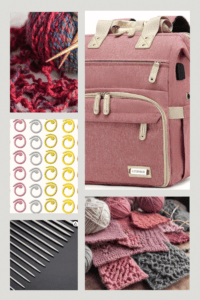
Knitting Accessories
Needle Materials
Knitting needles come in various materials, including wood, bamboo, metal, and plastic. Each material has its pros and cons:
Metal needles: These are lightweight, smooth, and durable, allowing stitches to glide effortlessly. They are also known for their sharp tips, making them ideal for intricate patterns and tight stitches.
Wooden needles: Wooden needles are warm to the touch and provide a natural grip, preventing stitches from sliding off. They are great for beginners because they offer slower stitch movement, giving beginners more control over their knitting.
Bamboo needles: Similar to wooden needles, bamboo needles have a warm feel and natural grip. They can also be smoother and lighter than other wooden needles.
Plastic: Plastic needles are lightweight and affordable but may lack the durability and smoothness of wood or metal needles.
Recommendation: Bamboo or wood needles are ideal for beginners due to their slight grip on the yarn, which helps prevent slips and makes knitting easier. If you want to invest in another pair, consider circular needles with a swivel cord so you don’t misplace them and they can help with a range of knitting skills you’ll learn soon.
Needle Size
Needle size corresponds to the diameter of the needle and is usually indicated in millimeters. The size of the needle affects the size of the stitches and the overall gauge of the project.
For beginners, size 8 (5mm) needles are a versatile choice that works well with worsted-weight yarn.
Circular knitting needles are also a great idea to have on your knitting supplies kit, as they will later become handy and if you buy them with a swivel chord, they may become your favorite pair.
Essential Accessories
Stitch Markers
Stitch markers are essential for keeping track of patterns, sections, and repeats in your knitting. They come in various types, including locking markers, rings, and homemade options like small loops of yarn. Using stitch markers can help you stay organized and avoid mistakes.
Tapestry Needle
A tapestry needle, also known as a darning needle, is used for weaving in ends and seaming pieces together. It has a large eye to accommodate yarn and a blunt tip to prevent splitting the fibers. A few high-quality tapestry needles in your knitting kit can make finishing your projects much easier.
Measuring Tape
A measuring tape is necessary for checking the gauge, measuring length, and tracking progress. Accurate measurements are crucial for ensuring your knitted items fit correctly and meet the project specifications.
Scissors
Having a dedicated pair of sharp scissors for cutting yarn is essential. Avoid using household scissors, as they can become dull and damage your yarn. Invest in a small, sharp pair of embroidery scissors for precise cutting.
Transporting Your Knits
Transporting your knitting project and supplies can be both practical and stylish with the right approach. Invest in a dedicated knitting bag that has multiple compartments to keep your yarn, needles, and accessories organized and protected. Opt for a bag with a sturdy structure to prevent your supplies from getting squished, and consider one with a zipper or a drawstring closure to keep everything secure. Smaller pouches or zippered cases can help keep smaller items like stitch markers, scissors, and tapestry needles from getting lost.
When transporting your project, use a yarn sleeve or yarn bowl to prevent tangling and ensure that your yarn feeds smoothly. For added convenience, choose a portable knitting bag with shoulder straps or handles, allowing you to knit on the go, whether you’re commuting, traveling, or simply enjoying some knitting time at a café.
Additional Tips for Beginners
Knitting Tutorials and Classes
There are numerous resources available for learning how to knit, including online tutorials, local knitting classes, and community groups. Websites like YouTube, Craftsy, and Ravelry offer a wealth of instructional videos and patterns. Joining a local knitting group or taking a class can provide hands-on guidance and support.
As a beginner knitter, you’ll also need to decide which style of knitting to use: Continental or English. The main difference between the two lies in how the yarn is held and fed into the stitches. In Continental knitting, often favored for its speed, the yarn is held in the left hand and picked by the needle, while in English knitting, the yarn is held in the right hand and wrapped around the needle. Both styles have their advantages, so it’s worth experimenting with each to see which feels more comfortable and natural for you. Developing proficiency in either method will set a solid foundation for your knitting journey.
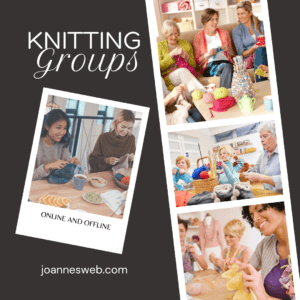
Knitting Groups
Practice and Patience
Knitting is a skill that improves with practice. Start with simple projects like scarves, dishcloths, or basic hats. These projects help you master basic stitches and techniques without overwhelming you. Remember to be patient with yourself and enjoy the learning process.
Knitting Kits
Beginner knitting kits are an excellent way to get started. These kits typically include everything you need: yarn, needles, patterns, and instructions. Brands like We Are Knitters and Lion Brand Yarn offer high-quality kits designed specifically for beginners.
Let’s Get Knitting!
Choosing the right materials is essential for beginner knitters. By selecting the appropriate yarn, needles, and accessories, you can ensure a smooth and enjoyable knitting experience. Start with worsted-weight yarn in light colors, bamboo or wood needles, and essential accessories like stitch markers, tapestry needles, measuring tape, and scissors. Utilize resources like online tutorials, local classes, and knitting kits to build your skills and confidence.
-
Beginner Knitting Patterns to Start Knitting
-
How to Knit: The Absolute Beginners Guide
-
Popular Knitting Terms
-
Our Knitting Video Tutorial Channel on YouTube has all the Basic Knitting Videos you need!
-
Download the Knitting Supplies Printable:
FAQs
1. What is the best type of yarn for beginners?
Acrylic or wool blends are recommended for beginners due to their affordability, ease of use, and wide availability.
2. Why is worsted-weight yarn recommended for beginners?
Worsted weight yarn is easy to handle, not too thin or too thick, and provides good stitch definition, making it perfect for learning and practicing new techniques.
3. What size knitting needles should beginners use?
Size 8 (5mm) needles are a versatile choice that works well with worsted weight yarn, making them ideal for beginners.
4. Why should beginners avoid dark-colored yarns?
Dark-colored yarns make it difficult to see your stitches, which can lead to mistakes. Light-colored yarns are easier to work with because the stitches are more visible.
5. Are there any good online resources for learning how to knit?
Yes, websites like YouTube, Craftsy, and Ravelry offer a wealth of instructional videos and patterns for beginners.
Sure, here are the answers to your questions about knitting:
6. Is it easy to learn how to knit?
Learning to knit can be relatively easy for most people, especially with the abundance of resources available, such as online tutorials, books, and classes. The basics are simple to grasp, but like any skill, it takes practice to become proficient.
7. What do I need to start knitting?
To start knitting, you need:
– Knitting needles
– Yarn
– Scissors
– A yarn needle (for weaving in ends)
– A beginner’s knitting guide or pattern (optional but helpful)
8. What is the easiest thing to learn to knit?
The easiest things to learn to knit are usually simple items like scarves or dishcloths. These projects involve straight rows and basic stitches, making them ideal for beginners.
9. Which way should beginners learn?
Beginners should start with the basic knit stitch and the purl stitch, as these are the foundation of most knitting patterns. Learning the cast-on and bind-off techniques is also essential. Many beginners find it helpful to watch video tutorials or take a class.
10. What about Purl Stitch?
The purl stitch is one of the two fundamental knitting stitches, along with the knit stitch. It creates a different texture on the fabric and is used in various patterns. Learning the purl stitch early on is important for expanding your knitting skills.
11. Is it easier to learn to knit or crochet?
The ease of learning to knit or crochet varies from person to person. Some find crochet easier because it involves one hook rather than two needles and generally has a simpler learning curve for basic stitches. Others prefer knitting for its rhythmic motion and the fabric it produces.
12. What is the easiest thing to knit?
The easiest things to knit are items that involve simple, repetitive patterns, such as scarves, dishcloths, or baby blankets. These projects help beginners practice their stitches without complicated instructions.
13. Which yarn weight should I start with?
Beginners should start with a medium-weight yarn, such as worsted weight. It’s easy to handle and see the stitches clearly, making it ideal for learning.
14. Which knitting needles are best for beginners?
For beginners, medium-sized needles (US size 7-9 or 4.5-5.5 mm) are usually the best choice. Bamboo or wooden needles are often recommended because they provide good grip and control.
15. What is a dropped stitch and how do I prevent it?
A dropped stitch occurs when a stitch slips off the needle and creates a gap in the fabric. To prevent dropped stitches:
– Pay attention to your knitting and make sure stitches are securely on the needle.
– Use needles with a slightly blunt tip to reduce the risk of stitches slipping off.
– Check your work frequently to catch any dropped stitches early.
If you do drop a stitch, you can use a crochet hook or a smaller needle to pick it back up and place it back on the needle.
People Also Ask
Related questions asked on Google:
-
What materials do I need to learn to knit?
-
What should a beginner knitter start with?
-
What knitting supplies to get for beginners?
-
What is the best material for knitting needles for beginners?
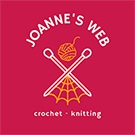
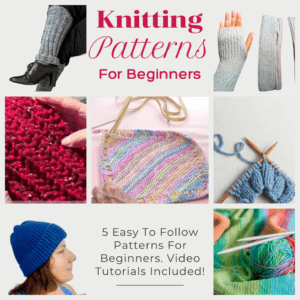

0 Comments